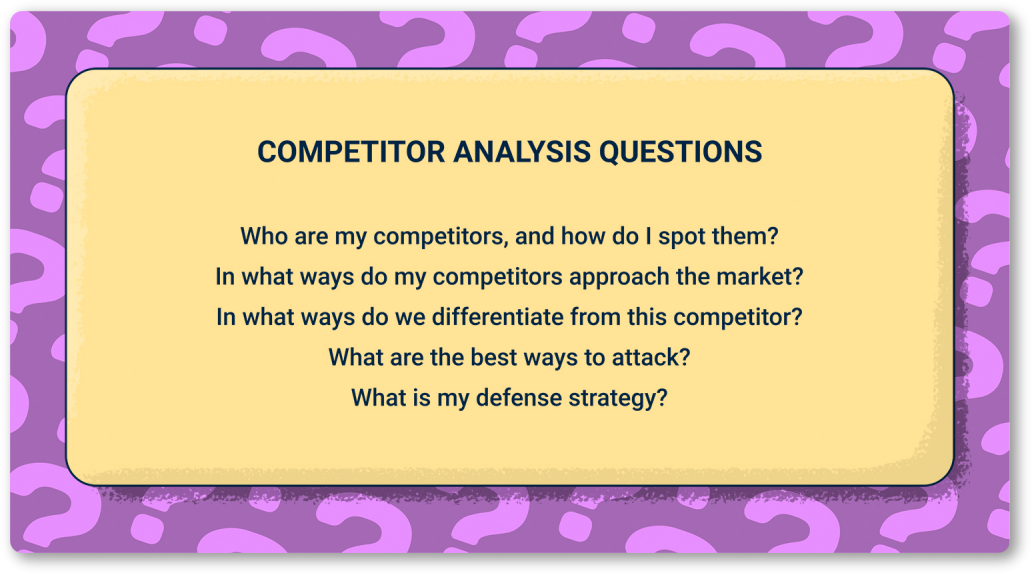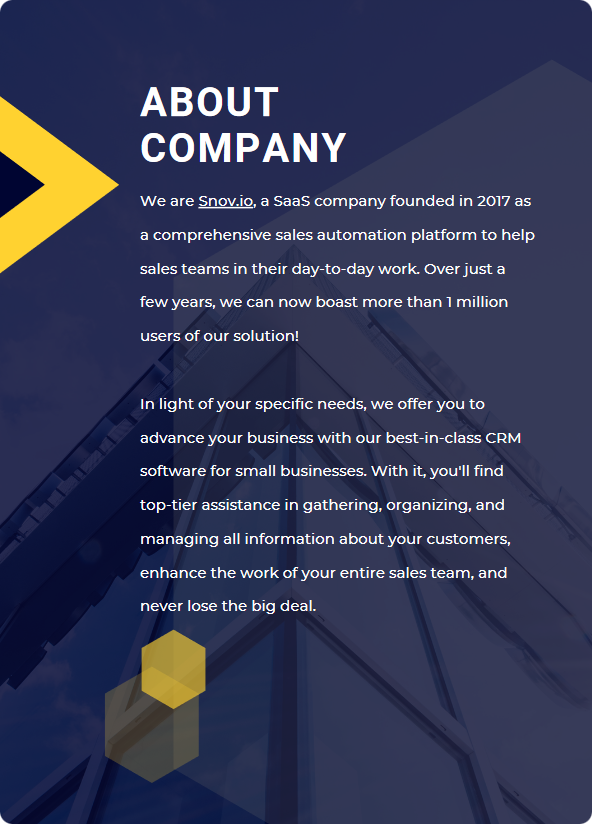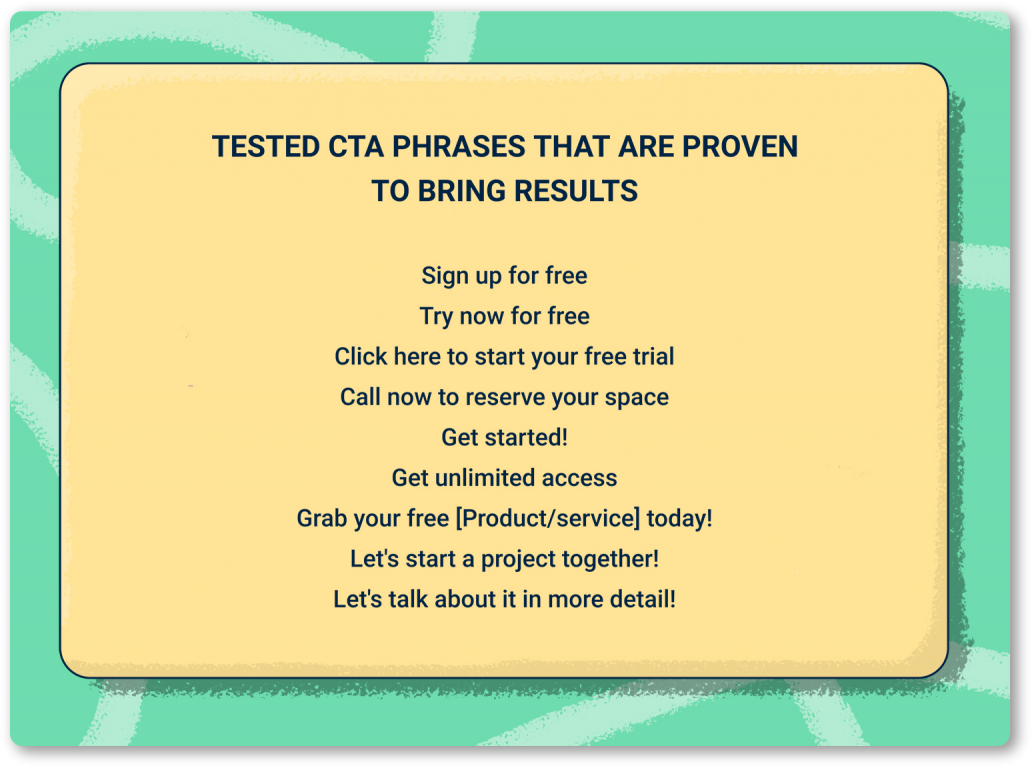Another workday. You stare at a blank document on your monitor for hours, unable to structure the piles of information about the product/service you’d like to offer to your customers. And you go through a lot of trial-and-error before you finally write your sales proposal without being sure it’ll work.
A familiar picture, isn’t it?
Only 47% of proposals result in a sale, so your concerns are not groundless! And there’s bound to be stress in the industry with high stakes and strict deadlines. But let’s face it: you can’t do without a sales proposal as it’s a gateway to gaining a new customer or successfully selling to a current one.
We’ve got you covered, though. With the tips we’ve collected for you in this blog post, you will craft compelling and profitable proposals that aim to sell and relieve you from stress. So, relax, feel a slight twinge of excitement, and let’s start.
Outline:
- Study your target audience
- Monitor competitors
- Come up with a unique selling point
- Make an eye-catching headline
- Introduce yourself and your product
- Explain how your product will solve the prospect’s problem
- Let the buyer know how much your product costs
- Add an extra benefit to the main price
- Show your product has won recognition
- State clearly what reaction you want from your prospect
What is a sales proposal: definition and types
A sales proposal (aka business or project proposal) is a document a business sends to its customers that describes its product/service features and explains what value it will bring and what specific problem it can help solve.
Sales proposals can be “cold” (solicited) and “hot” (unsolicited).
- Cold or unsolicited proposals are like cold emails — they’re sent to prospects who are not yet familiar with your company, brand, or product. Sending unsolicited proposals is often carried out with the help of email automation tools to relieve you from tedious, repetitive work.
- Hot or solicited proposals, on the other hand, are designed for those who have already been contacted by phone, email, or in-person and are usually sent upon customer request. When you receive an RFP (request for proposal), you can be sure that the organization is interested in your product to solve their problem. So, be ready to react immediately with a detailed sales proposal in place.
We will take a detailed look at how to structure and write solicited sales proposals in our next article. Meanwhile, we’ll focus on helping you craft a proposal for prospective customers who have no idea about you and your product, and you need to break the ice.
How to start writing a sales proposal?
Please be aware that the conversion rate of incorrectly written sales proposals is close to zero. Cold proposals will receive no response, and in the case of a poorly crafted hot proposal, customers usually promise to “consider and write back later.” As a result, they quietly dissolve into the digital space.
There are 2 main stages in developing a sales proposal that you need to go through before you start writing:
- Pulling together all the information you get,
- Thinking over the sales proposal structure,
- Choosing the most appropriate format and style.
These steps are vital for an efficient sales proposal process, but every so often, though, salespeople try to skip at least one of them, and it can stir up further problems. Let’s dive deeper and find out how to avoid this.
Tips on crafting a sales proposal at the preparation stage
Tip #1. Study your target audience
The first question is: “Who will be the buyer of my solution?”
Each product has its unique features with no less unique consumer audience. Therefore, to identify your target audience as accurately as possible, you should segment it first, i.e., divide it into several sectors according to shared characteristics: gender, age, geographic location, financial situation, and consumer behavior.
By identifying a potential buyer persona, you’ll better understand what is important to them, what criteria they use when making a purchase, what they’re ready to pay for, and what message will be of interest to them. A clear and detailed definition of your target audience will help you identify their pain points and how your product/service can remedy these pains.

It would be best if you could also find out the decision-making level of those who will read your sales proposal and make the final decision — a business owner, a stakeholder, a manager, etc. If you sell a high-tech solution, make sure a proposal you send reaches a specialist who can comprehend it.
It would also be beneficial to work in a CRM database that allows you to collect the necessary customer data and segment your target customers to feel their specific needs better.
Tip #2. Monitor competitors
Next, you need to clearly understand your strong and weak points compared to your competitors. At this point, sales collateral such as sales battle cards will be in handy.
You should study your direct competitors’ offers in terms of:
- Products or services
- Features and their updates
- Pricing
- Technical support
- Customer care
- Customization, etc.
Based on this data, you can then draft a comparison sheet aimed at figuring out the strengths and weaknesses of your product/service compared to those of your competitors, your winning points, and potential landmines.
By the way, as a result of using sales battle cards, 71% of businesses have increased their win rates. You can be among them, too.

Tip #3. Come up with a unique selling point
Collect all the available information about the product from your marketing and sales teams, from the product description and payment options to the after-sales service and client-company relationships. Then identify the unique selling point (USP) based on the data collected.
Tips on a sales proposal structure
Here we’ll propose a basic structure of a 3(4)-page sales proposal most appropriate for cold mailings when you offer your product/service to someone new. The same components are also valid when preparing a bulky and detailed proposal after receiving an RFP.
Of course, you are free to choose the structure of your sales proposal. You can remove or add some sections, depending on your purpose. However, we recommend sticking to the primary structural components you can see below:
- Title page/Headline
- Introduction
- Solution
- Terms and pricing
- Social proof
- Call to action
Tip #4. Make an eye-catching headline
The bullet-proof way to create intrigue is the eye-catching Title/Headline duplicated in the subject line of your email. It’s the first thing a prospect sees, and you only have three seconds to grab their attention. Let it be, if not love, then interest at first sight!
The Headline should contain your sales proposal’s primary benefit to its recipient. Here’re some examples:
- Link up and accelerate all your sales processes by simply signing up!
- Your flawless writing starts here. Write your heart out with a 50% off Premium account!
- Start saving up to 40% on lead generation tomorrow!

There’s nothing wrong with using numbers and comparisons, mentioning the benefits your prospect will get, intriguing, and provoking in headlines. But! You shouldn’t cross the line; otherwise, your proposal won’t reach the addressee.
Free, limited offer, hurry up, and similar words in headlines may result in your letter landing in a trash bin just because they are too trivial and are perceived by many as spam.
Tip #5. Introduce yourself and your product
The Introduction section of the sales proposal is the most straightforward one as it gives the potential customer an idea of who you are and how your product can help them. Here, you should show you’re familiar with the potential customer’s situation, know their pain points, and are confident that your product can take their troubles away.
The goal of the Introduction is to motivate your potential clients to read further, and it should be concise — 3-4 sentences are enough.

Tip #6. Explain how your product will solve the prospect’s problem
The Solution section intends to show what the prospect will get due to cooperation with you. It can be an increase in revenue, cost savings, new customers and partners, etc. Broadly speaking, you have to translate any advantage into the language of benefits.
It would be best to explain to your prospects why they should buy from you and not from competitors. This is why we will once again stress the importance of identifying the unique selling point (USP) of the product you offer first and conducting a thorough preliminary study of the target audience and competitors.
The key feature of a well-crafted USP is that it doesn’t flirt with the customer but directly offers to try the solution. “Sign up for our service!” would sound excessively impudent if not for the benefits it will bring to the customer. On the other hand, “Use our service for free by simply signing up!” sounds pretty attractive.

Tip #7. Let the buyer know how much your product costs
Don’t forget to include the price in your sales proposal; otherwise, most potential customers will fly to competitors right away. No one wants to spend time figuring out the cost!
Next, be transparent with the pricing and clearly show how much your product/service plans cost. If the price is negotiable, then state it in a separate sentence in addition to the price list.
Ensure comfortable terms of payment and cooperation conditions to show that the customer doesn’t risk anything, for example, payment only after checking the goods, working under a contract, etc.
Last but not least, set your pricing from low to high so as not to scare prospects away.
Tip #8. Add an extra benefit to the main price
If the price is significantly lower than that of competitors, this is already an excellent argument in favor of your product. If not, find something to stand out. Pay more heed to product warranty, top-quality technical support, gifts, and exclusive offers.
It would be best if you showed what else you could offer in addition to the product:
- Discounts — seasonal, wholesale, holiday, cumulative, pre-order, or prepayment;
- Next purchase coupon;
- Efficiency and availability of service or delivery;
- Free equipment/software setup and maintenance;
- Several versions of the product/service with different price options (like in the example below).

Tip #9. Show your product has won recognition
This section is necessary to eliminate suppositional doubts about your product in the prospect’s head and speed up your sales cycle. Objections usually arise due to the lack of information. So, in this part, you should add ultimate arguments like customer reviews, case studies, or expert recommendations. For example:
You can also enclose additional arguments like, for example:
- A trial period or a free demo so that the prospective customer can evaluate the quality of your solution and your level of customer service;
- Free shipping insurance;
- Compensation for delayed delivery.
Please remember that you’re too far from the deal closure at this stage, and a sales proposal doesn’t have to sell necessarily. However, the more arguments in favor of your product you’ll present at once, the more chances you will continue negotiations with your prospects and lead them to the bottom of the sales funnel.

Tip #10. State clearly what reaction you want from your prospect
At the end of your sales proposal, indicate what action the prospect should take after reading it. For example, “make an order,” “write back,” “follow the link,” “provide contact details,” etc.
Also, it will be best to mention restrictions on the period or quantity of goods, if any, e.g., “Contact us for a sample supply agreement. The offer is valid while the product is in stock in 10,000 units.”
A call to action (CTA) is often backed up with an additional benefit and gets readers to act by generating a sense of urgency: “Let us know before December 31 and use the wholesale terms of purchase for any order amount.”
Check out some more tested CTA phrases that are proven to bring results:

Tips on sales proposal editing
A genuinely effective sales proposal requires an individual approach. You can use templates you can find on the internet, but don’t forget that your competitors might also be using the same templates.
However, the editing requirements are the same for all kinds of sales proposals. Here are some suggestions you may use to improve your copy:
- Organize your proposal into sections with clear titles and headlines;
- The tone of voice should be similar throughout the entire document meaning no swings from too formal to too casual;
- Try to avoid any complex words and professional slang;
- Split long and difficult-to-read sentences into smaller ones;
- Add visuals, infographics, and flowcharts wherever you can.
Wrapping up
Drafting an efficient sales proposal that balances genuine value-addition with creative persuasion may require much of your time and energy. Nonetheless, your efforts will pay off when you find that your well-crafted sales proposal has received a high response and further conversion.
And when you automate the mailing of your ready-made sales proposal with the Snov.io Email Drip Campaign, you can relax completely and have some beer with your sales team.






